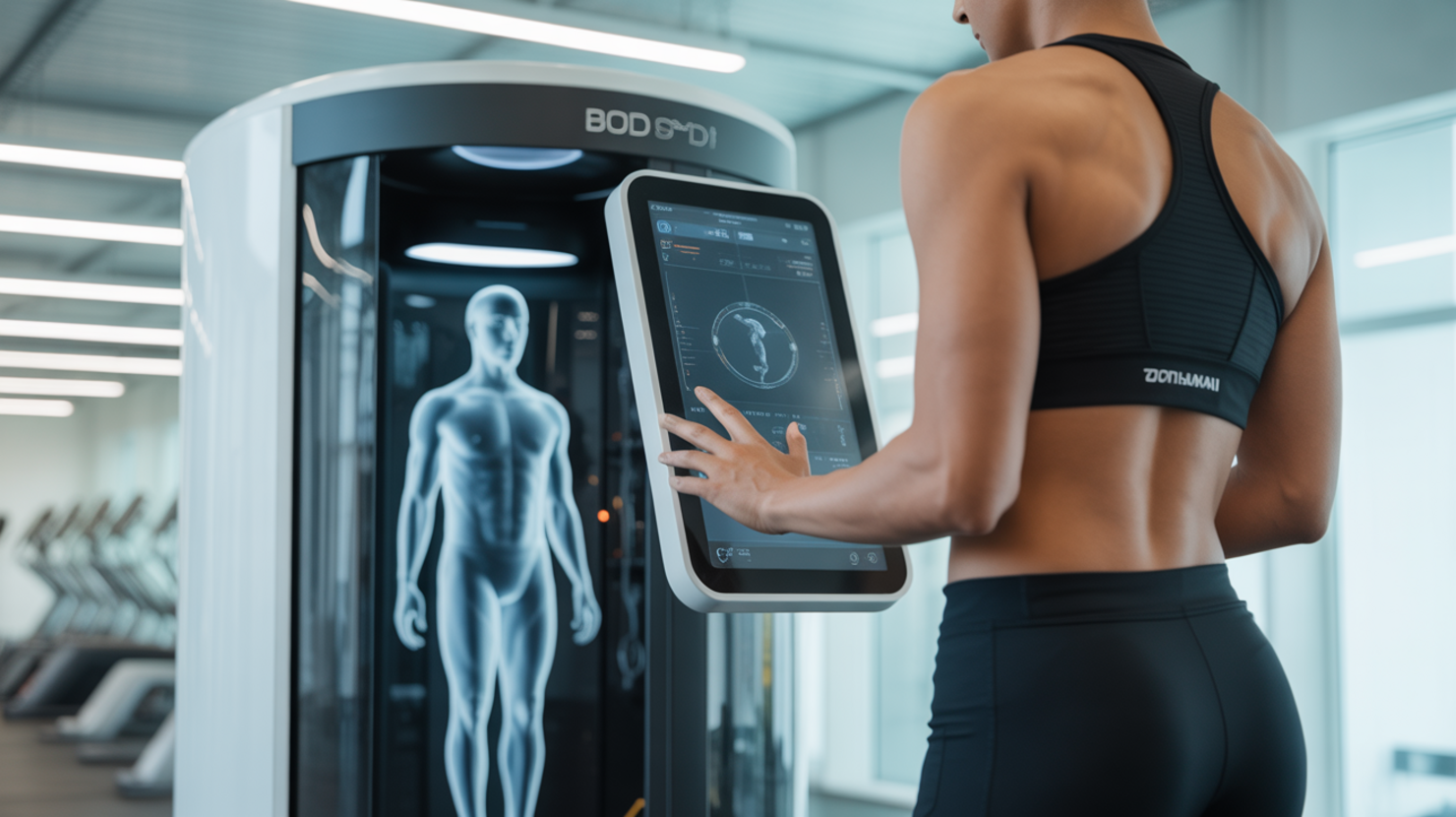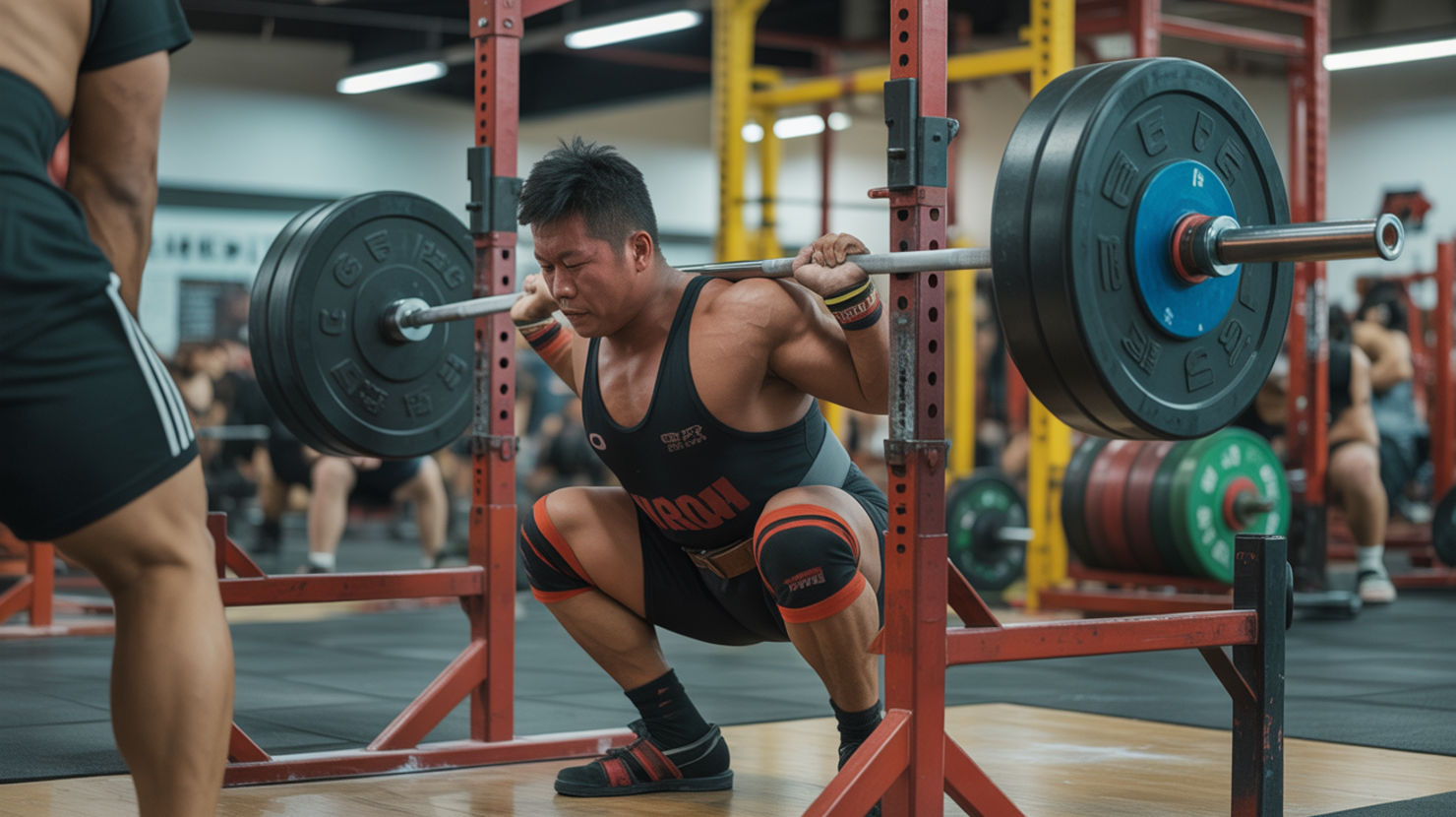Traditional fitness tracking often relies on simple metrics like body weight and the Body Mass Index (BMI). While accessible, BMI has significant limitations – it doesn’t differentiate between fat, muscle, and bone mass, meaning a highly muscular athlete could be classified as overweight or obese. This provides an incomplete, potentially misleading picture of health and fitness progress. This is where 3D body scan pods offer a revolutionary leap forward, providing unparalleled detail and accuracy in understanding our physical changes. ✨
These advanced systems use cutting-edge technologies, typically involving infrared light or high-resolution depth sensors, to quickly and non-invasively create a detailed, three-dimensional model of your body. From this quick scan – often taking just minutes – they derive precision measurements of body composition that go significantly beyond just BMI. You gain deep insights into crucial data points like total fat mass, subcutaneous fat, visceral fat levels (the dangerous fat surrounding internal organs), lean muscle mass down to specific body segments, bone mass, body shape ratios, and even posture. This level of detail provides a much clearer, medically relevant picture of your body’s makeup and how it’s changing than just a number on a traditional scale or a simple BMI calculation could ever offer. 📊
One of the most compelling and visually engaging features is the ability to generate a real-time visualization of muscle and fat distribution. Users don’t just see numbers; they see a dynamic 3D avatar of themselves. This avatar highlights exactly where they are building muscle, losing fat, or changing shape across their body segments. This powerful visual feedback can be incredibly motivating, making abstract data points tangible and easy to understand. It helps users immediately grasp how their training and diet efforts are specifically impacting their physique in different areas, reinforcing positive behaviors and highlighting areas that might need more focus.
Furthermore, these systems aren’t just about providing a single snapshot in time. By undergoing regular scans, the platforms leverage AI-powered trend analysis over time. The integrated software meticulously tracks body composition changes scan-to-scan, identifying patterns, highlighting progress, pinpointing plateaus, and even offering predictive insights. This historical data allows users, and potentially their fitness professionals, to make highly informed, data-driven decisions about adjusting workout routines, nutritional plans, or lifestyle habits. Understanding personal body composition trends helps optimize the journey towards specific fitness goals, whether it’s hypertrophy, fat loss, or improving metabolic health markers. This integration of AI analysis transforms fitness tracking from periodic data collection into a continuous, insightful, and personalized process, providing actionable intelligence derived from complex bodily metrics.
Southeast Asia’s Fitness Tech Adoption Surge 🗺️
The fitness landscape across Southeast Asia is experiencing a significant transformation, fueled by a rapidly growing urban middle class seeking more sophisticated and personalized health and wellness solutions. This demographic isn’t just looking for traditional gym access; they demand insights, tracking, and tools that offer hyper-personalization for their fitness journeys. This drive for tailored experiences creates fertile ground for the adoption of advanced fitness technologies like 3D body scan pods.
Crucially, Southeast Asia is predominantly a smartphone-first market. With high mobile penetration rates and increasing digital literacy, consumers are comfortable integrating technology into their daily lives, including health and fitness tracking. This widespread reliance on smartphones makes the adoption of digital health tools and connected fitness devices, like those linked to body scanning, a natural progression. The infrastructure and user habits are already in place, facilitating a faster uptake compared to regions with lower digital connectivity. For instance, reports on digital trends in the region consistently highlight high internet and social media usage, setting the stage for tech-savvy consumers ready to embrace innovation. You can find more statistics on this trend from sources like DataReportal.
In response to this demand and the favorable digital environment, gym chains throughout Southeast Asia are in a race to offer premium differentiators to attract and retain members. Standard equipment is no longer enough. Implementing high-tech solutions, such as 3D body scan pods, provides a tangible competitive advantage. These technologies elevate the member experience, offering data-driven insights that were previously hard to obtain. For fitness centers, this translates into a stronger value proposition, justifying higher membership fees and fostering greater member engagement through personalized progress tracking. This technological leap is becoming essential for staying relevant in the region’s increasingly competitive fitness market.
Subscription Costs vs Pay-Per-Scan Value
Understanding the cost structure is crucial when evaluating 3D body scan pods in Southeast Asia. Services typically offer either a subscription or pay-per-scan model. The best choice depends on your goals, tracking frequency, and budget, requiring consideration of upfront cost versus long-term value.
Subscriptions often cost around $15 to $30 USD monthly, commonly including unlimited or frequent scans and access to tracking dashboards. This suits those monitoring granular changes like muscle/fat weekly or bi-weekly. The main draw is unlimited access, allowing scans whenever needed for dedicated progress tracking.
The alternative is paying per scan. Prices vary, but a single scan can exceed half a monthly subscription cost. This suits casual users needing infrequent check-ins—quarterly or semi-annually. For only a few scans yearly, pay-per-scan is likely more cost-effective than a recurring fee.
Here’s a simple comparison:
| Feature | Subscription Model | Pay-Per-Scan Model |
|---|---|---|
| Typical Cost (USD/month) | $15 – $30 (unlimited/frequent) | Variable, e.g., $10 – $40+ per scan |
| Ideal Frequency | Frequent (weekly/bi-weekly) | Infrequent (monthly or less) |
| Best For | Dedicated trackers, high volume users | Casual users, periodic check-ins |
A ‘hidden cost’ can be data overkill from subscriptions. Unlimited scans provide constant data, potentially overwhelming users not actively using it or without guidance. For casual users, metric abundance can lead to analysis paralysis, diminishing value. Learning about body composition measurement and value helps determine appropriate frequency.
Ultimately, choosing between subscription and pay-per-scan depends on your commitment level, usage frequency, and ability to act on the data. Unlimited access suits dedicated users; infrequent pay-as-you-go may offer better value for others.
Cultural Barriers to Body Data Sharing 🤔
While 3D body scan pods offer fascinating insights into our physical selves, adopting them widely, particularly through subscription models, faces unique challenges in diverse regions like Southeast Asia. One significant hurdle is navigating deeply ingrained cultural norms surrounding personal data and body image. Unlike some Western cultures where self-tracking and sharing personal metrics might be more common, many societies in Southeast Asia have strong privacy concerns.
In collectivist societies, the concept of privacy can extend beyond the individual to encompass the family or community. Sharing detailed personal health or body composition data publicly, or even with a commercial entity, can feel intrusive or culturally inappropriate for some. There’s often a hesitancy to expose such sensitive information, even for fitness goals. This intrinsic data privacy concern is a major factor influencing willingness to subscribe to services requiring regular, detailed personal scans.
Furthermore, regional variations in body image sensitivities play a crucial role. Discussions or public displays related to weight, size, or specific body composition metrics can be sensitive topics in certain cultures within Southeast Asia. A technology that precisely measures and visualizes body fat and muscle distribution, while scientifically valuable, needs to be introduced and utilized with awareness and respect for these sensitivities. The blunt presentation of data without cultural context or careful handling could be off-putting.
Finally, a trust gap with foreign technology providers is also a factor. Users in Southeast Asia, like many places globally, are increasingly aware of data security and how their information is stored and used, especially when dealing with companies headquartered far away. Building sufficient trust regarding the handling and security of highly personal data like 3D body scans is essential for overcoming reluctance and encouraging subscription uptake. Ensuring transparent data policies and robust security measures, perhaps even achieving local certifications or partnerships, is vital. You can find more information on digital trust in the region via reports from organizations like the ASEAN Secretariat (This is a placeholder link; replace with an actual relevant source).
Operational Realities in Tropical Climates ☀️
Tropical climates, typical across much of Southeast Asia, present unique challenges for high-tech fitness equipment like 3D body scan pods. One significant hurdle is high humidity. These scanners often rely on sophisticated optical or infrared sensors to capture precise body geometry. Excessive moisture in the air can interfere with light beams or sensor readings, potentially leading to skewed or inaccurate measurements of body composition. Maintaining consistent, reliable data under such environmental conditions requires either significant investment in climate control systems within the scanning area or specialized, more robust hardware designed to withstand these elements. This directly impacts the operational efficiency and data integrity of the service.
Beyond immediate accuracy issues, the tropical climate also contributes to higher maintenance costs. The combination of heat and humidity can accelerate wear and tear on delicate electronic components and mechanical parts within the scanning pods. Frequent calibration becomes essential to ensure continued precision. Furthermore, the risk of moisture damage requires regular cleaning and potentially more frequent repairs or part replacements compared to operations in drier, more temperate regions. These increased operational expenses are naturally factored into the business model, often influencing the subscription pricing structure offered to gyms and, subsequently, to end-users.
Another practical consideration in Southeast Asia’s bustling urban centers is space constraints. Gyms located in densely populated cities face high real estate costs. 3D body scan pods require a dedicated footprint – they aren’t small, portable devices. Allocating valuable floor space for a scanning station represents a significant investment for the gym owner. This limited and expensive space needs to generate sufficient return, often through high usage rates. The pressure to maximize revenue from this dedicated area can also influence pricing models, potentially favoring subscription plans that encourage frequent use over less predictable pay-per-scan options, to justify the physical space occupied.
Behavior Change vs Data Overload Paradox 🤯
One of the most compelling promises of 3D body scan technology is its ability to provide incredibly detailed insights into body composition. For many, seeing precise metrics like muscle mass distribution, fat percentage, and segmental body volumes can be a powerful motivator. Regular scans, perhaps weekly or bi-weekly as part of a subscription, can serve as tangible checkpoints. Seeing progress, or lack thereof, on a detailed report can be a strong driver for consistency in sticking to a fitness or nutrition plan. The visual feedback reinforces the link between effort and results, potentially keeping users engaged longer than traditional methods.
However, there’s a flip side to this data richness. While some thrive on detail, others can become overwhelmed. Imagine receiving a multi-page report detailing dozens of metrics. Without understanding what each number means in context, or how they relate to specific goals, users can experience analysis paralysis. They might focus excessively on minor fluctuations in insignificant metrics while missing the bigger picture. This deluge of information, rather than empowering, can become demotivating, leading users to abandon the tool entirely because it feels too complicated or intimidating.
This is where the human element becomes invaluable. The data from a 3D body scan is a powerful tool, but it’s just data. Its true value is unlocked through expert interpretation and guidance. A qualified fitness trainer, nutritionist, or health coach can help users understand their scan results, translate complex metrics into simple, actionable insights, and set realistic, data-informed goals. They can help distinguish between meaningful trends and noise, ensuring the data serves as a roadmap for behavior change rather than a source of confusion. Pairing subscription scans with access to professional interpretation can significantly enhance their effectiveness in driving actual, sustainable fitness and health improvements. The goal isn’t just more data; it’s using the right data in the right way to foster positive behavioral changes.
Next-Gen Wearables Challenging Scan Dominance ⌚
While 3D body scan pods offer incredibly detailed snapshots of body composition, the fitness technology landscape is rapidly evolving. A key challenge to the dominance of scan pods comes from next-gen wearables, which are pushing the boundaries of continuous health and fitness tracking. These devices are not just step counters anymore; they are becoming sophisticated biometric sensors worn directly on the body.
Imagine clothing that monitors your muscle activity during a workout or sensors embedded in fabrics that track sweat composition for hydration levels. Smart clothing is emerging as a contender, capable of capturing continuous biometrics in real-time throughout the day, not just during a single scan session. This constant stream of data provides insights into daily habits, recovery, and performance trends in a way that periodic scans cannot.
Furthermore, augmented reality (AR) interfaces are starting to make fitness data, including scan results, more intuitive and actionable. Instead of just looking at numbers or charts on a screen, AR could allow users to visualize changes in body shape or muscle development directly overlaid onto their reflection or a 3D avatar. This kind of engaging visualization can make complex data more understandable and potentially more motivating.
Ultimately, the future may not be a direct competition between scan pods and wearables, but rather a hybrid approach. Scan pods could provide the detailed baseline and periodic deep dives into body composition, while advanced wearables offer the continuous tracking of activity, recovery, and specific biometrics. This blended fitness tracking model leverages the strengths of both technologies, providing a comprehensive view of an individual’s health and fitness journey. Resources like technology news sites often highlight these emerging trends.











